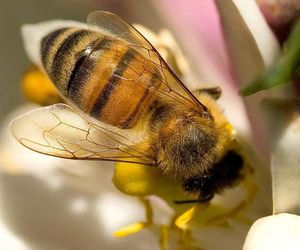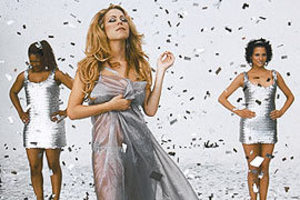Wildlife-loving gardeners across the world enthuse about planting butterfly gardens, but relatively few think to design and plant a bee garden. Designing and planting a bee garden will bolster the health of your garden and help conserve one of earth’s treasures.
Why Design and Plant a Bee Garden
There are over 3,500 species of bees native to the United States. Unfortunately, due to land development and the extensive use of pesticides, their numbers are declining. In fact, the entire world is experiencing a shortage of bees. Why is this a problem?
Bees provide the much-needed service of pollinating plants. Approximately 80 percent of the flowering plants on earth require the help of pollinators, such as bees, for survival. That includes the plants which serve as food for humans. It is estimated one out of every three bites of food we take is made possible by bees and other pollinating wildlife.
Planting a well-designed bee garden provides food and shelter for bees, allowing them to nest and increase their population in safety. In return, the bees will increase the health and productivity of your garden and the gardens of those around you.
How to Design and Plant a Bee Garden
Variety is the spice of life to a bee. Bee gardens that use 10 or more species of bee-preferred plants tend to be the most successful. Bees will even visit less attractive plants in these gardens while they are there. Using a wide variety of preferred plants in your bee garden will also attract a wide variety of bees. This is especially true when you choose to use a nice assortment of plants native to your area.
Bee season goes from March through October. Choose a selection of plants that will bloom successively during this time period. A continuous provision of nectar and pollen will be available to bees if one type of bloom becomes available as another is dying out.
Flowers should be planted in large patches of like varieties to allow bees to dine in one spot for long periods of time. Gardens with scattered plants do not attract as many visits, and therefore receive less pollination, because bees expend too much energy flying between locations.
Bees thrive in gardens that are not extremely manicured, as solitary bees (ones who do not live in colonies) often prefer to make their nests in the ground. If you prefer the manicured look of mulch, leave some areas of dirt exposed for solitary bee nesting. Bee houses are an option when a manicured garden look is preferred. Place them in the shady areas of your garden where they will not be disturbed. Another option is to create bee nesting areas by filling planters and barrels with soil or sand. Place these where they will be protected from direct sunlight and rain.
Bees require a bit of water in addition to their nectar. A good bee garden will include a few puddles from which the bees can drink. Keep the puddles in muddy areas, as the bees will absorb needed minerals and salt from the soil as they sip the water.
Pesticides should not be used in bee gardens. Many pesticides work indiscriminately, killing off helpful insects along with the intended pest victims. If you truly need a pesticide in your garden, use a natural one made from microbes or plant derivatives and apply after sundown.
Choosing Plants When You Design and Plant a Bee Garden
The best plants to choose for your bee garden are varieties that are native to your area. Native plants will attract a nice variety of native bees. Certain bees require the native plants of their area to survive. Shop for your bee garden plants at a reputable nursery with knowledgeable staff who can assist you.
Plants that are not native to your area will attract bees as long as you pick the correct varieties. Stay away from anything with the word ‘double’ in the name or description. Double’ plants have been bred to grow extra petals instead of anthers, the reproductive parts of the flowers, from which bees collect pollen. Stick to the old-fashioned single varieties of both non-native and native plants for your bee garden.
Bees are especially attracted to flowers that are purple, blue or yellow. They do not have the capability to see red and will rarely visit flowers in variations of that primary color. A few red flowers, such as bee balm, attract bees by reflecting ultraviolet light.
Small bees, which have short tongues, are most often attracted to small, shallow flowers. Use flowers such as daisy, marigold, butterfly weed, valerian, buttercup, aster, yarrow and Queen Anne’s lace.
Larger bees, which have longer tongues, can handle slightly deeper flowers. They enjoy plants such as delphinium, larkspur, columbine, monkshood and snapdragon. Long-tongued bees are also attracted to various herbs, such as sage, oregano, mint and lavender.
Leaf-cutting bees are drawn to plants in the legume family and sweet clover.
Flowers to Use When You Design and Plant a Bee Garden
Bees require two types of plants to survive: pollen plants and nectar plants. Pollen from plants is taken back to their nests to feed the young bees. Nectar plants feed the adult bees to give them energy while looking for pollen. Some of the nectar is also added to the nests to feed the baby bees.
Below is a short list of bee-preferred plants based on blooming season. Some of these plants will provide bees with just nectar or just pollen, while others will provide both. Speak to specialists at your local nursery for additional suggestions for your bee garden based on your location.
Spring:
Nectar plants – Barberry, Bee plant, Blue Pea, Borage, Chinese Houses, Horehound, Lavender, Sage, Salvia, Scented Geranium, Wisteria
Pollen plants – Bush Anemone, California Poppy, Yarrow
Combination – Bidens, Blanket Flower, Blazing Star, Daisy, Marigold, Tansy
Summer:
Nectar plants – Basil, Catnip, Horehound, Lavender, Lamb’s Ear, Mint, Oregano, Rosemary, Sage, Sea Holly, Spearmint, Thyme, Toadflax, Verbena
Pollen plants – Borage, California Poppy, Chaparral Nightshade, Tomato, Yarrow
Combination – Bidens, Black-eyed Susan, Blanket Flower, Bluebeard, Calenula, Cosmos, Daisy, Dusty Miller, Goldenrod, Gum Plant, Lemon Queen, Pincushion, Purple Coneflower, Pumpkin, Squash, Zucchini
Autumn:
Nectar plants – Autumn Sage, Rosemary, Toadflax, Verbena, Yellow Trumpet bush
Combination – Bluebeard, Cosmos, Pumpkin, Squash
Sunflowers are excellent bee plants that bloom throughout the season. They come in two types: with and without pollen. They will attract more bees to your bee garden if you choose the varieties with pollen.


